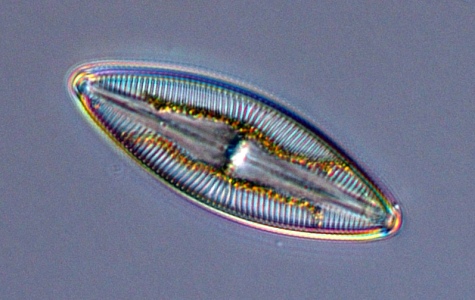
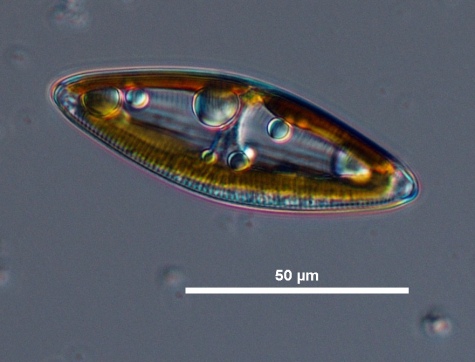
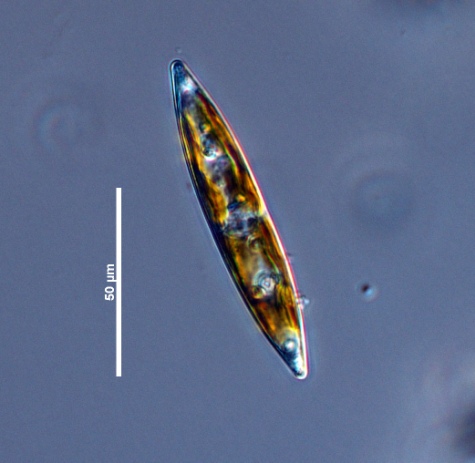
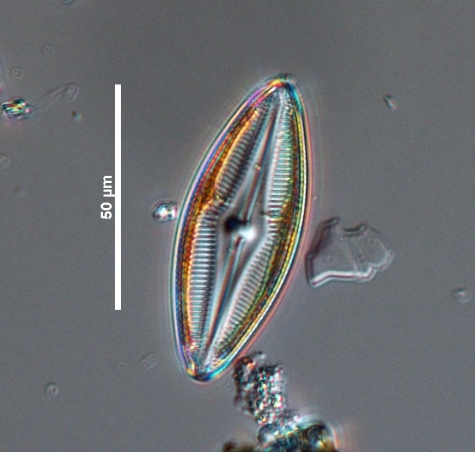
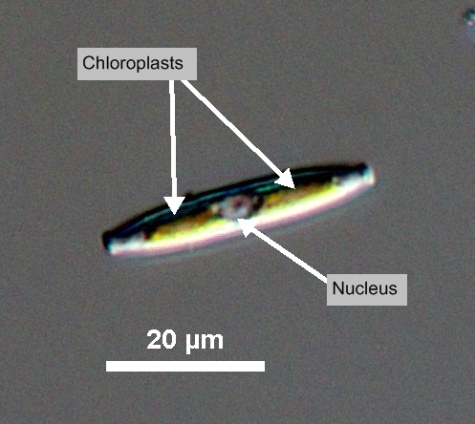
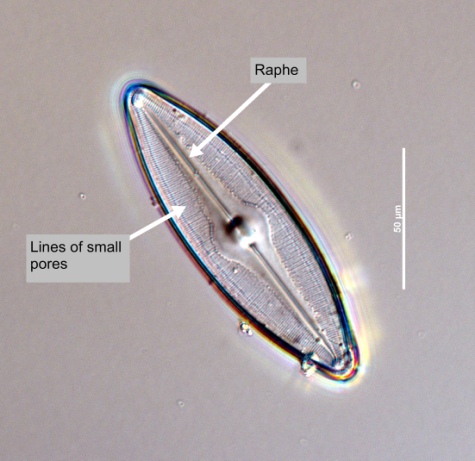
|
Classification
(Guiry and Guiry 2012)
Lifestyle
Description
Girdle
In diatoms, the portion of the cell wall between the two valves of a cell; made up of intercalary bands (bands closest to the valves) and connecting bands (bands in the middle of the girdle). In dinoflagellates, the equivalent of a cingulum or transverse furrow (Horner 2002).
girdle view, and widely CloseLanceolate
Lance-shaped. Having a wider rounded base and tapering towards the tip.
lanceolate in CloseValve
In diatoms, the structurally distinct halves of the cell wall (Becker 1996).
valve view. Both valves have a central longitudinal raphe with a nodule (bump) in the middle. Valve surface is covered in transverse striations that are crossed by finer longitudinal striations (Hasle and Syvertsen 1997). Two chloroplasts are present, one on each side of the raphe (Cupp 1943).Measurements
Apical
(axis, spine) The region of the apex or point. Refers to the most anterior point or region of the cell (HPP 2003).
(apical axis): 32 - 130 μmWidth Close
Transapical axis
In diatoms, the longitudinal axis of the valve.
(transapical axis): 7 - 21 μmTransverse Close
Striae
(referring to pores in diatoms) In diatoms, a striation or row of pores on the valve face. "In centric diatoms, striae may be radial, running from the centre of the valve to the margin ... In pennate diatoms, striae may be parallel to the median line of the valve or raphe" (Horner 2002).
striae: 5 - 16 in 10 μmLongitudinal striae: 24 - 33 in 10 μm
(Hasle and Syvertsen 1997)
Similar species
Sigmoid
S-shaped.
sigmoidal in valve view, whereas Navicula species are straight.Harmful effects
Habitat
Distribution
Environmental Ranges
Temperature range (°C): -2.045 - 29.468
Nitrate (μmol L-1): 0.053 - 33.849
Salinity: 16.391 - 38.873
Oxygen (mL L-1): 1.154 - 9.116
Phosphate (μmol L-1): 0.046 - 2.354
Close
Silicic acid
A general term to describe chemical compounds containing silicon, oxygen and hydrogen with a general formula of [SiOx(OH)4-2x]n. Diatoms polymerize silicic acid into biogenic silica to form their frustules (Azam and Chisholm 1976).
Silicate (μmol L-1): 0.754 - 107.078(OBIS 2012, cited in EOL 2012)
Bloom characteristics
References
Cupp, E. E. 1943. Marine Plankton Diatoms of the West Coast of North America. University of California Press. Berkeley, California. 238.
Encyclopedia of Life (EOL). 2012. Navicula. http://eol.org/pages/76973/overview. Accessed 06 Apr 2012.
Guiry, M. D. and Guiry, G. M. 2012. Navicula Bory de Saint-Vincent, 1822: 128. http://www.algaebase.org/search/genus/detail/?genus_id=43698. Accessed 06 Apr 2012.
Hasle, G. R. and Syvertsen, E. E. 1997. Marine diatoms. In: Tomas, C. R. (ed.) Identifying Marine Phytoplankton. Academic Press, Inc., San Diego. 5-385.
Ocean Biogeographic Information System (OBIS). 2012. Navicula. http://www.iobis.org/mapper/?taxon_id=475889. Accessed 06 Apr 2012.
